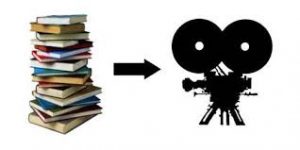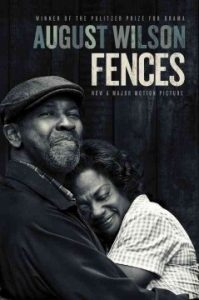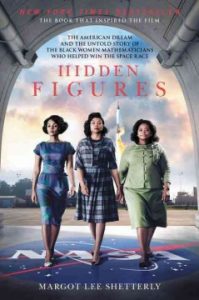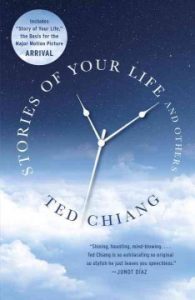Last week, we considered the art of the adaptation in film, the pros and cons of taking a novel and making it into a film. As we discussed, it’s not an easy process, and takes a lot more creativity, diligence, and daring than many of us can, I think, appreciate.

Today, the Academy of Motion Picture Arts and Sciences announced the nominations for the 2017 Academy Awards–in a new format, over which we were, apparently, supposed to be very excited. While that part of the pageantry was lost on me, what I did notice was there there are a number of literary adaptations that, in some way or another, made it onto the Academy’s lists.
 This is pretty exciting news for us. Granted, it’s not that difficult to get us excited about books or movies, but when we can talk about both of them (and perhaps put together a few fun Library Displays in the bargain), it’s always a good time. And, while the Oscars generally seem like a glittery diversion (at best) or a bit of a waste of time (at worst), in comparison to the everyday world, maybe a little bit of glitter now and then is just what we need to keep going, right?
This is pretty exciting news for us. Granted, it’s not that difficult to get us excited about books or movies, but when we can talk about both of them (and perhaps put together a few fun Library Displays in the bargain), it’s always a good time. And, while the Oscars generally seem like a glittery diversion (at best) or a bit of a waste of time (at worst), in comparison to the everyday world, maybe a little bit of glitter now and then is just what we need to keep going, right?
So I thought, for the next few Wednesday that are not graced with Melissa’s super-terrific “Wednesdays at the West” posts, that we would spend some time looking at the films nominated for Academy Awards this year, and the books that, directly or covertly, inspired them. That way, by the time the Oscars do come around (and the DVDs of the films are all finally released), you (and I) will have added to our ‘To Be Read’ stack of books, as well as our ‘To Be Viewed’ pile of films….and we all will, of course, have decided what to wear.
Best Pictures:
 Fences: Nominated for Best Picture, Best Actor (Denzel Washington), Best Supporting Actress (Viola Davis) and Best Adapted Screenplay (by Denzel Washington), this film has been generating talk about awards ever since the first trailer was released. August Wilson’s 1983 play focuses on Troy (played by Washington), a 53-year-old Black man living in Pittsburgh, who is struggling to support his family, which consists of his wife, Rose (played by Davis), his son Cory, and Troy’s younger brother Gabriel, a veteran whose war injury to his head has caused him noticeable psychological damage. Though once a promising baseball player, Troy was never able to break the color barrier in baseball, and, after spending time in prison for an accidental murder he had committed during a robbery, he now works as a trash collector. This is a work about relationships, the ones we break and the ones we chose to mend, and about the barriers that we put between and around ourselves in life (as symbolized by the fence itself that is built throughout the play). Though one reviewer commented, at the play’s Broadway debut, that it was “very heavy and with its nearly three hours of lost hope and broken dreams it can feel long and depressing”, it won a Tony Award and the Pulitzer Prize in 1987–and has proven its power once again.
Fences: Nominated for Best Picture, Best Actor (Denzel Washington), Best Supporting Actress (Viola Davis) and Best Adapted Screenplay (by Denzel Washington), this film has been generating talk about awards ever since the first trailer was released. August Wilson’s 1983 play focuses on Troy (played by Washington), a 53-year-old Black man living in Pittsburgh, who is struggling to support his family, which consists of his wife, Rose (played by Davis), his son Cory, and Troy’s younger brother Gabriel, a veteran whose war injury to his head has caused him noticeable psychological damage. Though once a promising baseball player, Troy was never able to break the color barrier in baseball, and, after spending time in prison for an accidental murder he had committed during a robbery, he now works as a trash collector. This is a work about relationships, the ones we break and the ones we chose to mend, and about the barriers that we put between and around ourselves in life (as symbolized by the fence itself that is built throughout the play). Though one reviewer commented, at the play’s Broadway debut, that it was “very heavy and with its nearly three hours of lost hope and broken dreams it can feel long and depressing”, it won a Tony Award and the Pulitzer Prize in 1987–and has proven its power once again.
 Hidden Figures: In 1935, the NACA (National Advisory Committee for Aeronautics, a precursor to NASA) , hired five African-American women as “computers” in their program, less out of a desire to be inclusive, or to hire the best people, but, as NASA Historian Bill Barry points out, because “The women were meticulous and accurate… and they didn’t have to pay them very much”. Nevertheless, the contributions of Dorothy Vaughan, Mary Jackson, Katherine Johnson, and Christine Darden, were crucial to the space program and, especially, to the US space race.
Hidden Figures: In 1935, the NACA (National Advisory Committee for Aeronautics, a precursor to NASA) , hired five African-American women as “computers” in their program, less out of a desire to be inclusive, or to hire the best people, but, as NASA Historian Bill Barry points out, because “The women were meticulous and accurate… and they didn’t have to pay them very much”. Nevertheless, the contributions of Dorothy Vaughan, Mary Jackson, Katherine Johnson, and Christine Darden, were crucial to the space program and, especially, to the US space race.
 Arrival: This film is a bit different from the other two, in that is was actually adapted from a novella by Ted Chiang, entitled Story of Your LIfe, which won the 2000 Nebula Award for Best Novella. If you haven’t seen this film or read Chiang’s work, it’s really hard to describe the plot without giving the whole thing away….suffice it to say that both film and book are narrated by Dr. Louise Banks, who is hired by the US military to study a race of aliens that have made first contact with humanity. She discovers that the heptapods (so named because of their seven legs and circular appearance) have a spoken language and, more significantly, a written language that is, essentially, circular. Her study of their language–and, in so doing, their culture–she begins to think like them, as well (known as the Sapir–Whorf hypothesis), and realizes not only the nature of the world, and her place within it. Though Eric Heisserer, who wrote the Academy Award-nominated screenplay (for Best Adapted Screenplay) stated that this was his favorite science fiction book, he also talked about how difficult it was to bring a book that relies so heavily on physics and complex linguistics to the screen. Ultimately, though, as he notes, “While all of that science and language work went through a hundred iterations, what remained constant was the main character Louise’s emotional journey”.
Arrival: This film is a bit different from the other two, in that is was actually adapted from a novella by Ted Chiang, entitled Story of Your LIfe, which won the 2000 Nebula Award for Best Novella. If you haven’t seen this film or read Chiang’s work, it’s really hard to describe the plot without giving the whole thing away….suffice it to say that both film and book are narrated by Dr. Louise Banks, who is hired by the US military to study a race of aliens that have made first contact with humanity. She discovers that the heptapods (so named because of their seven legs and circular appearance) have a spoken language and, more significantly, a written language that is, essentially, circular. Her study of their language–and, in so doing, their culture–she begins to think like them, as well (known as the Sapir–Whorf hypothesis), and realizes not only the nature of the world, and her place within it. Though Eric Heisserer, who wrote the Academy Award-nominated screenplay (for Best Adapted Screenplay) stated that this was his favorite science fiction book, he also talked about how difficult it was to bring a book that relies so heavily on physics and complex linguistics to the screen. Ultimately, though, as he notes, “While all of that science and language work went through a hundred iterations, what remained constant was the main character Louise’s emotional journey”.
